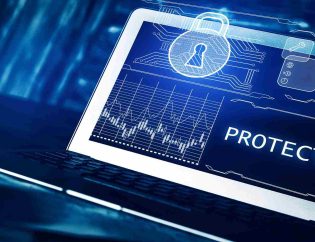
Table of Contents
Introduction
Endpoint privilege management plays a critical role in safeguarding organizational systems from evolving cybersecurity threats. By controlling user access and restricting excessive privileges, businesses can minimize vulnerabilities and enhance their security posture. This article delves into endpoint privilege management, exploring its benefits, solutions and best practices in detail to provide a comprehensive guide.
Understanding Endpoint Privilege Management
Endpoint privilege management refers to the practice of controlling and managing user permissions on endpoint devices such as computers, smartphones and tablets. It ensures that users and applications only have the access rights necessary to perform their tasks effectively. By limiting access to just what is needed, organizations can significantly reduce the risk of security breaches caused by overprivileged accounts. This approach also prevents unauthorized access to sensitive information, ensuring better protection for critical business data. With endpoint privilege management, businesses can maintain a safer and more controlled environment for their IT operations.
In the words of a prominent cybersecurity expert, “Security is not a product, but a process.” Endpoint privilege management embodies this philosophy by emphasizing continuous monitoring and control to mitigate potential threats. Partnering with an Endpoint Security Company further enhances this proactive approach, ensuring robust protection against modern threats.
Key Features of Endpoint Privilege Management Solutions
Organizations adopting endpoint privilege management solutions gain access to several advanced features that bolster security and operational efficiency:
Granular Control:
Assign specific access levels to users and applications, ensuring no extra privileges. This reduces risks of unauthorized access and potential data breaches.
Auditing and Reporting:
Track access patterns, create detailed logs and spot unusual behavior early. These tools help organizations quickly identify and address vulnerabilities.
Real-Time Alerts:
Get instant notifications about suspicious activities. Fast alerts enable administrators to act quickly and prevent potential security breaches from escalating.
Policy Enforcement:
Ensure compliance with important regulations like GDPR, HIPAA and PCI DSS. Following these policies avoids legal risks and enhances overall security.
Seamless Integration:
Integrates easily with existing IT systems, ensuring smooth operations without interruptions. This compatibility simplifies setup and improves workflow efficiency.
Benefits of Endpoint Privilege Management
1. Enhanced Security:
2. Simplified Compliance:
3. Operational Efficiency:
Bullet Points Section: Advantages at a Glance
Practical Applications in Cybersecurity
Organizations can leverage endpoint privilege management solutions in the following ways:
Securing Remote Work Environments:
Protect endpoint devices used by remote employees, especially in hybrid work setups.
Safeguarding Critical Applications:
Restrict access to high-value systems, ensuring only authorized users can interact with them.
Mitigating Insider Threats:
Monitor and manage internal user privileges to detect and prevent misuse of access rights.
Improving Incident Response:
Contain breaches faster by identifying and revoking compromised privileges.
Customer Testimonial
“Before implementing endpoint privilege management, we struggled with unauthorized access and excessive user privileges, leading to multiple security incidents. With a tailored solution, we reduced security incidents by 40% and achieved compliance with industry standards. The integration was seamless and transformed our approach to cybersecurity. It’s now an essential part of our IT operations.”—IT Manager, Financial Services Firm.
Challenges and Best Practices
Challenges:
Best Practices:
Comparison of Common Endpoint Security Practices
| Feature | Traditional Security | Endpoint Privilege Management |
|---|---|---|
| Privilege Restriction | Limited | Comprehensive |
| Real-Time Monitoring | Partial | Full |
| Insider Threat Mitigation | Low | High |
| Compliance Support | Moderate | Strong |
| Integration with IT Systems | Limited | Seamless |
Endpoint Privilege Management is key to cybersecurity. It limits access, reduces risks, ensures compliance and protects sensitive data from modern threats. Strengthen your security posture today! #CyberSecurity #EndpointSecurity
— Hyper Secure (@HyperSecure) December 12, 2024
FAQs
1. What is endpoint privilege management?
Endpoint privilege management involves controlling and monitoring user permissions on endpoint devices to enhance security and prevent unauthorized access.
2. How does endpoint privilege management improve security?
It reduces vulnerabilities by enforcing the principle of least privilege and monitoring user activities for suspicious behavior.
3. Are endpoint privilege management solutions costly?
Costs vary by provider, but most solutions offer scalable plans to suit businesses of all sizes and budgets.
4. Can endpoint privilege management integrate with existing systems?
Yes, modern solutions are designed to seamlessly integrate with existing IT infrastructure, making implementation straightforward.
5. Why is endpoint privilege security important?
Endpoint privilege security prevents unauthorized access, reduces insider threats and ensures compliance with regulatory standards, protecting organizational assets.
6. How do real-time alerts benefit organizations?
Real-time alerts enable swift responses to potential threats, minimizing the impact of security breaches.
Conclusion
Endpoint privilege management is a vital component of modern cybersecurity strategies. At Hyper Secure, we provide cutting-edge solutions to protect your organization from threats, ensuring robust endpoint privilege security. Our scalable solutions are designed to safeguard your digital assets efficiently and effectively. Contact us today to learn more about enhancing your security posture.








